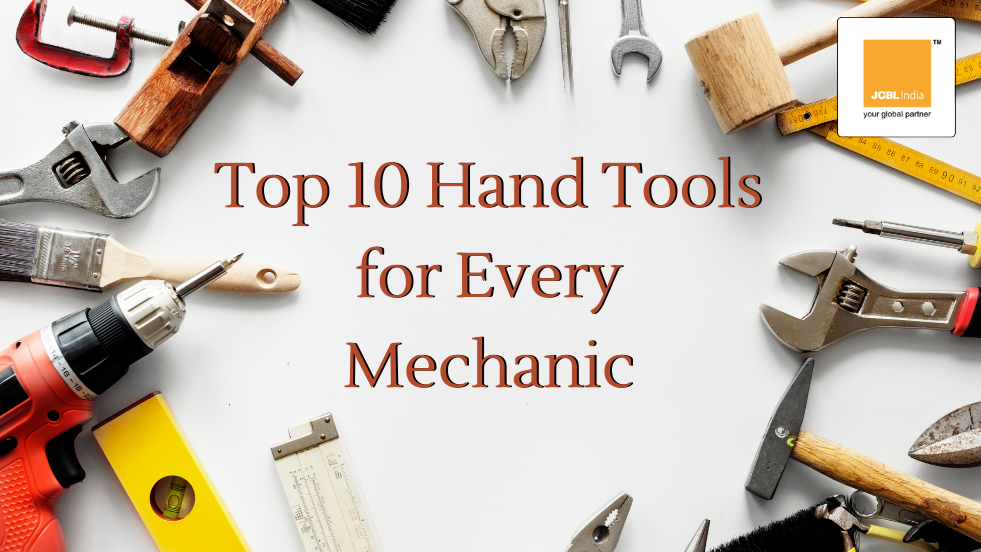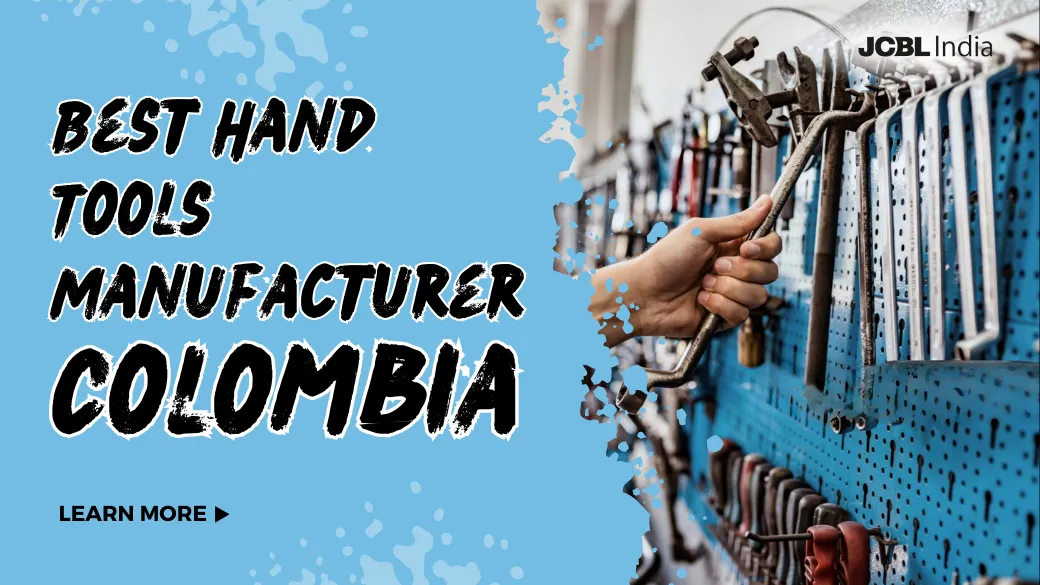Top 10 Hand Tools Every Mechanic Needs

A mechanic’s toolbox is akin to a knight’s arsenal, essential for facing the challenges that come with repairing vehicles. While modern technology has introduced sophisticated diagnostic equipment and power tools, the importance of traditional hand tools remains undeniable. Whether you’re a seasoned professional or an amateur enthusiast, having the right-hand tools can make all the difference in efficiently and effectively completing automotive repairs.
In this blog, we’ll explore some of the must-have hand tools every mechanic should have in their toolbox.
Screwdrivers

Screwdrivers are arguably the most fundamental hand tools in any mechanic’s arsenal. They come in various shapes and sizes, each designed for specific tasks. Flathead and Phillips head screwdrivers are the most common types, used for tightening or loosening screws of different shapes. Additionally, having a set of precision screwdrivers is invaluable for delicate tasks such as electronics repair or working on small components within the vehicle.
Wrenches

Wrenches are indispensable for loosening or tightening nuts and bolts of varying sizes. A combination wrench set, which includes both open-end and box-end wrenches, is essential for versatility. Additionally, having a set of adjustable wrenches can be useful for tackling bolts of non-standard sizes. For more specialized tasks, such as working on hydraulic systems, flare nut wrenches or line wrenches may be necessary.
Socket Set

A comprehensive socket set is a cornerstone of any mechanic’s toolbox. Socket sets typically include a variety of sockets in different sizes, along with ratchets and extensions. They are essential for tasks such as removing and installing bolts, nuts, and other fasteners. Investing in a high-quality socket set with both metric and standard (imperial) sizes ensures compatibility with a wide range of vehicles.
Pliers

Pliers are versatile hand tools that come in various types, each serving a specific purpose. Needle-nose pliers are invaluable for reaching into tight spaces or bending wires while locking pliers (such as Vise-Grip pliers) provide a secure grip on objects. Other types of pliers, such as slip-joint pliers and diagonal cutting pliers, have their unique applications, making them essential additions to any mechanic’s toolbox.
Hammers

Hammers may not be the first tool that comes to mind when thinking of automotive repair, but they play a crucial role in certain tasks. A ball-peen hammer is useful for shaping metal or driving pins, while a rubber mallet is ideal for tapping delicate components without causing damage. Additionally, having a dead blow hammer, which contains a shot or sand to minimize rebound, is essential for tasks that require controlled force.
Pry Bars and Crowbars

Pry bars and crowbars are indispensable for tasks that require leverage, such as removing stubborn parts or separating components. A set of pry bars in varying lengths allows mechanics to tackle a wide range of tasks, from prying apart engine components to removing trim panels. Investing in quality pry bars ensures durability and reliability when faced with challenging repairs.
Torque Wrench

A torque wrench is essential for ensuring that bolts and fasteners are tightened to the correct specifications. Over-tightening can lead to stripped threads or component damage, while under-tightening may result in loose or insecure connections. A torque wrench allows mechanics to apply precise torque settings, critical for maintaining the integrity and safety of automotive assemblies.
Files and Rasps

Files and rasps may seem old-fashioned in today’s age of power tools, but they remain indispensable for certain tasks. A set of files allows mechanics to smooth rough edges, remove burrs, or fine-tune metal surfaces. Rasps, with their coarse teeth, are ideal for shaping wood or soft materials. Whether it’s deburring a metal component or shaping a gasket, files, and rasps are essential tools for achieving precision in automotive repairs.
Spanners

Spanners, also known as wrenches in some regions, are essential for turning nuts and bolts. They come in various types, including open-end, box-end, and combination spanners. A comprehensive set of spanners ensures that mechanics have the right tool for the job, whether it’s tightening a stubborn bolt or loosening a rusted nut.
Pincers

Pincers, sometimes referred to as lineman’s pliers, are essential for gripping, cutting, and bending wires. They feature long handles and sharp jaws, making them ideal for tasks such as stripping insulation from wires or pulling nails. Pincers are indispensable for electrical work and general automotive repairs, making them a valuable addition to any mechanic’s toolbox.
Conclusion
JCBL Hand Tools stands out as a premier manufacturer renowned for top-quality hand tools that meet the needs of professionals and DIY enthusiasts alike. We have earned a reputation for excellence in the industry. From wrenches and pliers to screwdrivers and sockets, their comprehensive range of tools is designed to deliver unmatched performance, reliability, and longevity.
While modern technology continues to revolutionize the automotive industry, traditional hand tools remain essential for mechanics around the world. From screwdrivers and wrenches to hammers and pliers, each tool plays a vital role in completing automotive repairs efficiently and effectively. By investing in a comprehensive set of hand tools and maintaining them properly, mechanics can tackle any repair job with confidence and precision. As the saying goes, “A mechanic is only as good as their tools,” so be sure to equip your toolbox with the essentials for success.
Frequently Asked Questions
Which DIY tool is best?
The best DIY tool often depends on the specific task at hand. However, some versatile and commonly recommended DIY tools include a cordless drill/driver, a combination wrench set, a hammer, a tape measure, and a utility knife. These tools can handle a wide range of tasks from simple repairs to more complex projects.
Which is the most powerful tool?
Determining the “most powerful” tool can vary depending on the context of use and the specific task. However, in terms of sheer power and versatility, pneumatic (air-powered) tools are often considered among the most powerful. Tools like pneumatic impact wrenches, air compressors, and pneumatic nail guns are known for their high torque and efficiency.
What are the most available tools to use at home?
The most commonly available tool in most households is likely the screwdriver. It’s a versatile tool used for various tasks such as assembling furniture, tightening screws, and opening paint cans. Additionally, it’s relatively inexpensive and comes in different types (flathead, Phillips, etc.) to accommodate different screw types.
What is left hand tool?
A “left-hand tool” typically refers to a tool designed for left-handed individuals. However, in the context of tools, there isn’t a specific category of tools exclusively for left-handed users. Most tools are designed to be ambidextrous or can be used comfortably by both left-handed and right-handed individuals. Some exceptions might include specialty items like left-handed scissors or ergonomic tools designed with grips that are more suitable for left-handed users.



